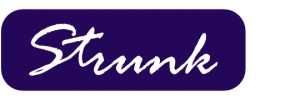Charge Off and Recovery Tracking and Reporting
After an overdrawn account has been charged off, financial institutions may still need to track and report on the charge-off balances and recoveries related to the overdrawn accounts. ODP Manager includes a manual tracking process that may allow your users to manage the charge-off and recovery process after the deposit account had been closed.
Once the account has charged off, users can create a Charge-off Item with the date, charge-off principal, charge-off fees, charge-off reason, and item status. Users can also include notes at the time the item is created and throughout the recovery process. Updates and changes are logged as well. As recoveries are made, they should be entered in ODP Manager and they will reduce the overall charge-off balance tracked.
All Charge-off Items for the last year are displayed on the C/O Items and Recoveries summary page. If a longer or shorter reporting timeframe is desired, a different default timeframe can be requested by the financial institution. Also, users can change the start and end dates at any time to change the charge offs displayed. The summary displays basic account and charge-off information. When the summary information is exported as a PDF it will overall totals and adds additional totals by branch.
Please contact Strunk Support at support@strunkaccess.com with any questions or to find out more details about using the Charge-off Items and Recoveries feature.


